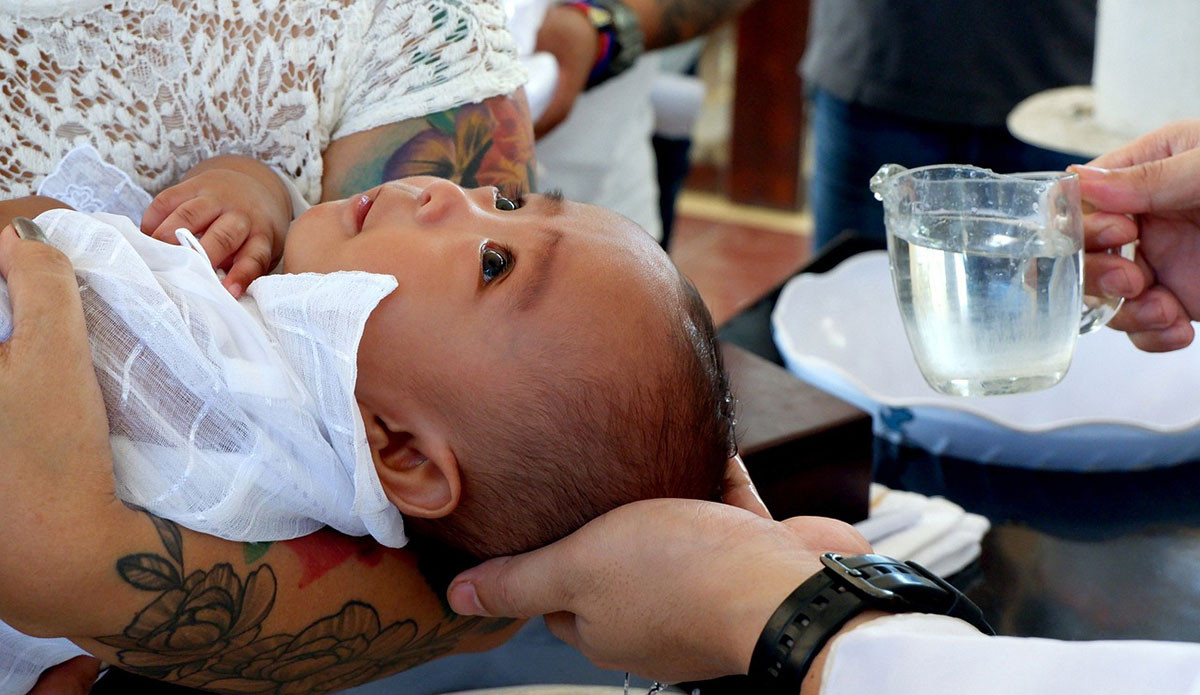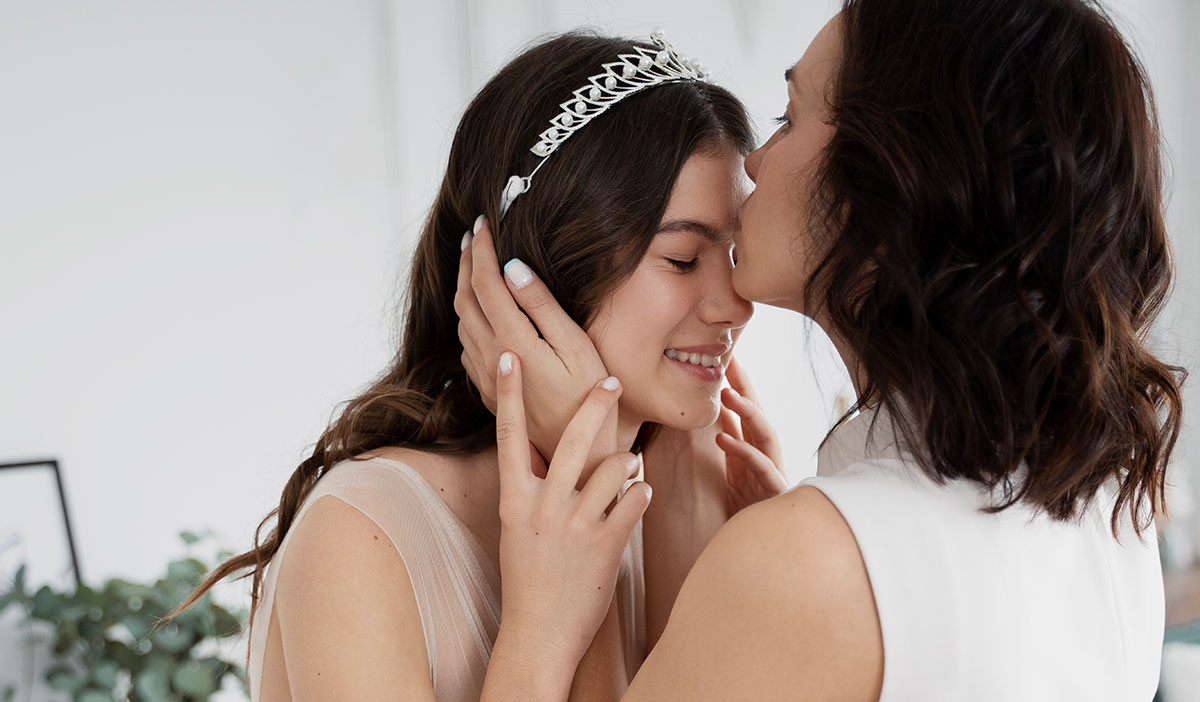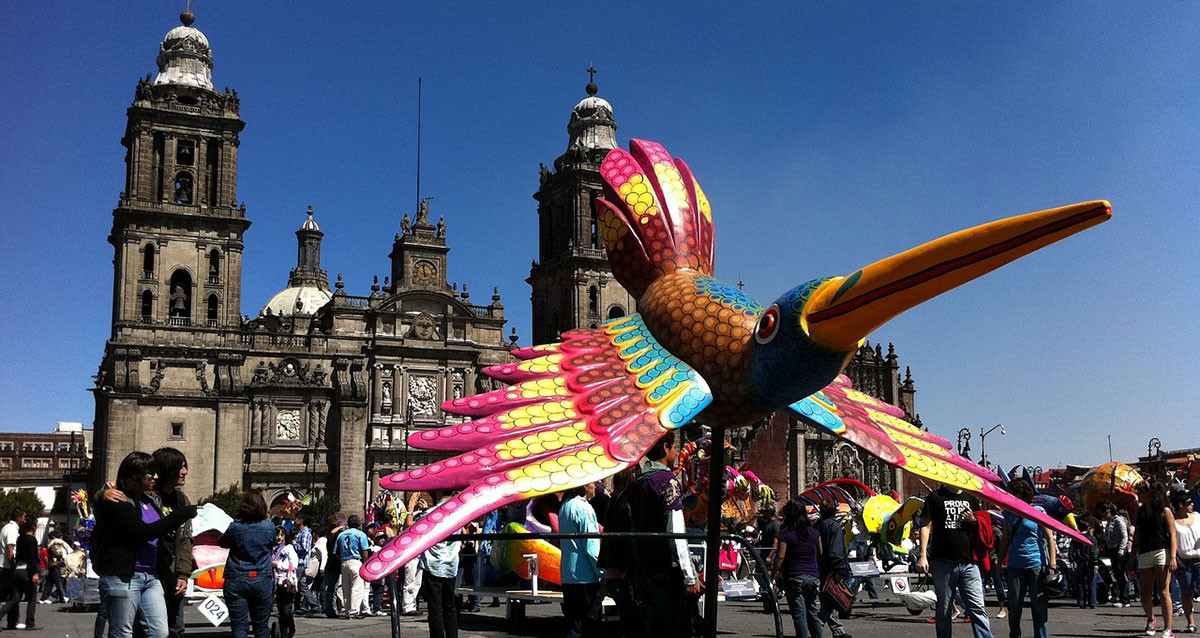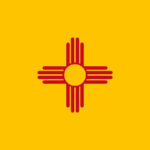Are you curious about Mexican customs? Mexican traditions, with their blend of indigenous heritage and vibrant LGBTQ+ culture, offer a unique and colorful experience for everyone. This gaymexico.net guide dives into some of the most cherished and recognized traditions, ensuring you’re well-informed and ready to explore Mexico’s rich cultural tapestry. Discover LGBTQ+-friendly celebrations and insights into Mexican society, and plan your adventure with confidence.
1. What Are the Mexican Traditions Recognized by UNESCO?
Several Mexican traditions are recognized by UNESCO as Intangible Cultural Heritage, showcasing their unique cultural value. These traditions are safeguarded for future generations.
- Día de los Muertos (Day of the Dead): Celebrated on November 2, this vibrant festival honors deceased loved ones with colorful altars, food, and music, reflecting a unique perspective on life and death.
- Los Voladores de Papantla (Dance of the Papantla Flyers): Witnessed every June 15, this stunning ritual involves men spiraling down from a high pole, symbolizing harmony with the universe and gratitude for fertility and harvest.
- Tradiciones de la Peña de Bernal (Peña de Bernal Traditions): Observed every May 1st, the Otomí-Chichimeca people climb this massive monolith to pray for rain and protection, followed by a festive celebration.
- La Pirekua Purépecha (Purepecha Song): Celebrated year-round, especially on Purépecha New Year (February 1st), this musical performance from Michoacán combines songs, poetry, and dance, blending Native American, European, and African influences.
- Danza de los Parachicos (Parachico Dance): Taking place every January 15-23, in Chiapa de Corzo, this vibrant dance pays tribute to patron saints with music, dance, and elaborate costumes, uniting indigenous and Spanish influences.
- Gastronomía Mexicana (Mexican Cuisine): Celebrated year-round, Mexican cuisine is world-famous for its complex dishes like mole, tamales, and chile relleno, recognized for its cultural significance.
- Mariachi (Mariachi Music): Celebrated year-round, particularly on January 21, this genre, originating from Jalisco, symbolizes Mexican culture worldwide with its trumpets, violins, and passionate songs.
- Charrería (Mexican Rodeo): Celebrated year-round, especially on September 14, this equestrian sport tests the skill and bravery of charros, celebrating Mexican cowboy culture and heritage.
These traditions offer a glimpse into Mexico’s diverse cultural landscape.
2. What Are Some of the Major Indigenous Mexican Traditions?
Mexico’s indigenous communities maintain rich cultural traditions that reflect their unique heritage. According to INEGI, there are 68 indigenous communities and 364 indigenous languages in the country.
Nahua
With a population of around 3 million, the Nahua people are the largest indigenous group in Mexico and descendants of the Aztecs. Their language, Nahuatl, is Mexico’s most common indigenous language, with about 1.5 million speakers. They have colorful celebrations, like those dedicated to the corn harvest.
 A Nahua woman weaving a colorful textile, showcasing traditional artistry and cultural heritage.
A Nahua woman weaving a colorful textile, showcasing traditional artistry and cultural heritage.
Maya
The Maya civilization spans the entire Yucatán Peninsula and the neighboring countries of Belize and Guatemala. They are known for their achievements in astronomy, writing, and architecture.
Zapotec
The Zapotec culture is indigenous to the valleys of Oaxaca. They maintain a close connection to their ancestors through language, traditional dress, and festivals. The Guelaguetza festival is a testament to this.
Mixtec
The Mixtec culture is known for its exceptional goldsmithing and codices. They inhabit the states of Oaxaca, Guerrero, and Puebla.
P’urhépecha
The P’urhépecha are an indigenous culture with a rich history in Michoacán. Their language is unique and unrelated to others in Mexico.
Guelaguetza – Oaxacan Traditional Holiday
The Guelaguetza festival in Oaxaca is a display of indigenous culture, showcasing traditional dances, music, and attire.
Noche de Rábanos – Night of the Radishes
Night of the Radishes is a celebration in Oaxaca during which people make sculptures from radishes that represent Mexican folklore, religion, and daily life.
These traditions reflect the enduring heritage of Mexico’s indigenous communities.
3. What Are the Major Religious Mexican Traditions?
Mexico is a predominantly religious country, with nearly 80% of the population identifying as Catholic. These traditions often involve family gatherings and are deeply ingrained in Mexican culture.
- Bautizos (Baptisms): These ceremonies mark a child’s introduction to the Christian faith and are significant family events, often followed by a large meal and party.
- Primera Comunión (First Communion): A child’s First Communion is an important milestone, symbolizing the child’s first acceptance of the body of Christ.
- Confirmación (Confirmation): Teenagers confirm their commitment to the Catholic Church’s teachings, seen as an important coming-of-age ceremony.
- Semana Santa (Holy Week): This week commemorates the passion, death, and resurrection of Jesus Christ, featuring processions and reenactments, and is a popular vacation period.
- Fiesta de San Mateo (Saint Matthew’s Party): Celebrated in Cholula, Puebla, this festival honors Saint Matthew, combining religious ceremonies with indigenous rituals.
- El Día de la Virgen de Guadalupe (The Traditional Pilgrimage to The Virgin of Guadalupe): Millions of devotees visit the Basilica of Our Lady of Guadalupe in Mexico City every December 12 to honor Mexico’s patron saint.
- Noche Buena (Christmas Eve): Most celebrations happen on Christmas Eve, with families gathering for a big dinner and exchanging gifts.
- Posadas (Christmas Parties): Celebrated from December 16 to 24, these parties represent Mary and Joseph’s search for shelter before Jesus’ birth.
- Día de los Reyes Magos (Epiphany): Celebrated on January 6, this day involves eating a rosca de reyes, and whoever finds the Baby Jesus figurine hosts a party on Día de la Candelaria.
- Guadalupe–Reyes: This term refers to the holiday season, which runs from December 12 through January 6, filled with celebrations and relaxation.
These religious traditions are integral to Mexican culture, blending faith and festivity.
4. What Are Some of the Most Significant Mexican Festivals and Celebrations?
Mexicans are known for their love of celebrations, particularly during national holidays.
Fiestas Patrias – National Celebrations
The biggest celebration is on the night of September 15, known as “Grito de Dolores” or “Grito de la Independencia.”
Carnavales – Carnivals
These feature parades, costumes, and dancing, particularly in the coastal cities of Mazatlán and Veracruz.
Día de la Revolución – Mexican Revolution Day
Mexican Revolution Day marks the start of the 1910 revolution against the dictatorship of Porfirio Díaz.
Día de los Santos Inocentes – Mexican April Fool’s Day
This is a day of pranks in remembrance of the biblical story of King Herod’s decree to kill all newborn boys.
Feria Nacional de San Marcos – San Marcos National Fair
The Feria Nacional de San Marcos, held annually in Aguascalientes City, is one of Mexico’s oldest and most traditional fairs.
Feria Internacional del Libro de Guadalajara – Guadalajara International Book Fair
The Feria Internacional del Libro de Guadalajara is the largest book fair in the Spanish-speaking world.
Festival Internacional Cervantino (FIC) – International Cervantino Festival
Held in Guanajuato, El Cervantino celebrates the legacy of Spanish writer Miguel de Cervantes.
These festivals and celebrations reflect Mexico’s patriotism and cultural pride.
5. What Family and Life Cycle Traditions Are Important in Mexico?
Family is central to Mexican culture, with certain milestones becoming unmissable family events.
Quinceañera or XV Años – Sweet Fifteen
Celebrated on a girl’s 15th birthday, a Quinceañera marks a girl’s transition into womanhood.
 A young woman in a beautiful quinceañera dress, symbolizing her transition into womanhood with grace and tradition.
A young woman in a beautiful quinceañera dress, symbolizing her transition into womanhood with grace and tradition.
Bodas – Weddings
Mexican weddings are usually three-day affairs, with massive parties and extreme displays of joy.
Piñatas – Birthday Parties
Piñatas are an essential part of any child’s birthday party, synonymous with childhood celebrations.
Día de las Madres – Mother’s Day
Celebrated on May 10, this is an extremely important day in Mexico, reflecting the significant role of mothers.
Día del Padre – Father’s Day
Celebrated on June 20, it’s a day when families express their gratitude to fathers.
Día del Niño – Children’s Day
Celebrated on April 30, this day is dedicated to appreciating the joy and importance of children.
Día del Abuelo – Grandparent’s Day
Celebrated on August 28, Día del Abuelo honors grandparents for their wisdom, love, and contributions.
These family and life cycle traditions are deeply cherished in Mexican culture.
6. What Are Some Notable Examples of Mexican Traditional Arts and Crafts?
Mexican artistry is known worldwide for its colorful perspectives and intricate designs.
Alebrijes
These fantastical figures are carved from paper or wood and painted in bright colors, symbolizing creativity and personal expression.
 A collection of vibrant alebrijes, showcasing the fantastical creatures and intricate artistry of Mexican folk art.
A collection of vibrant alebrijes, showcasing the fantastical creatures and intricate artistry of Mexican folk art.
Barro Cocido – Baked Clay
This nimble material is transformed into pottery and sculptures.
Talavera Poblana – Pueblan Pottery
This ceramic art from Puebla is known for its intricate designs and vibrant blue hues.
Sarapes
These colorful, striped blankets are iconic symbols of Mexican culture.
Platería
This exquisite silverwork showcases the unmatched skill of Mexican artisans.
These arts and crafts represent Mexico’s history and identity.
7. What Music and Dance Traditions Are Popular in Mexico?
Music and dance are integral to Mexican culture, embodying joy, sorrow, and celebration.
Jarabe Tapatío – Mexican Hat Dance
This folk dance is a playful courtship dance where the man woos the woman around a sombrero.
Jarana Yucateca
This dance represents the rhythms of Yucatán, celebrating the Peninsula’s Mayan and Spanish heritage.
La Danza de los Viejitos – The Dance of the Little Old Men
This dance, performed by dancers disguised as old men, symbolizes the wisdom and vitality of the elderly.
El Huapango
This genre features intricate footwork and powerful violin, guitar, and jarana melodies from the Huasteca region.
La Bamba
This folk song, originating from Veracruz, combines indigenous Mexican, European, and African cultures.
Danza del Venado – The Deer Dance
This ritual, performed by the indigenous Yaqui and Mayo tribes, reenacts the hunt of the deer.
Fiesta de Santa Cecilia
This festival honors the patron saint of musicians, emphasizing the importance of music in Mexican culture.
These music and dance traditions enrich Mexican culture, bringing people together through rhythm and celebration.
8. Do Mexicans Celebrate Cinco De Mayo?
While Cinco de Mayo is popular in the United States, it is not widely celebrated in Mexico. This holiday commemorates Mexico’s victory against the French in the Battle of Puebla in 1862.
9. When Is Mexican Independence Day Celebrated?
Mexican Independence Day is celebrated on September 16, with the main celebration occurring the night before on September 15. The president recites “El Grito” from the Presidential Palace’s balcony.
10. Is Thanksgiving Celebrated in Mexico?
Thanksgiving is not traditionally celebrated in Mexico. However, younger generations have picked up this holiday, with “Friendsgiving” becoming increasingly popular.
11. What Are the Three Most Popular Holidays in Mexico?
The three most popular holidays in Mexico include:
- September 16: Día de la Independencia (Independence Day)
- November 2: Día de los Muertos (Day of the Dead)
- December 25: Navidad (Christmas Day)
These holidays highlight the cultural significance of tradition, remembrance, and family in Mexico.
Embrace the vibrant traditions of Mexico with gaymexico.net! Discover LGBTQ+-friendly destinations, cultural events, and valuable resources to ensure a safe and unforgettable adventure. Explore our detailed guides, connect with the local LGBTQ+ community, and experience the rich heritage of Mexico.
Ready to explore Mexico? Visit gaymexico.net to plan your journey, discover LGBTQ+-friendly locations, and connect with a welcoming community!
Address: 3255 Wilshire Blvd, Los Angeles, CA 90010, United States.
Phone: +1 (213) 380-2177
Website: gaymexico.net

